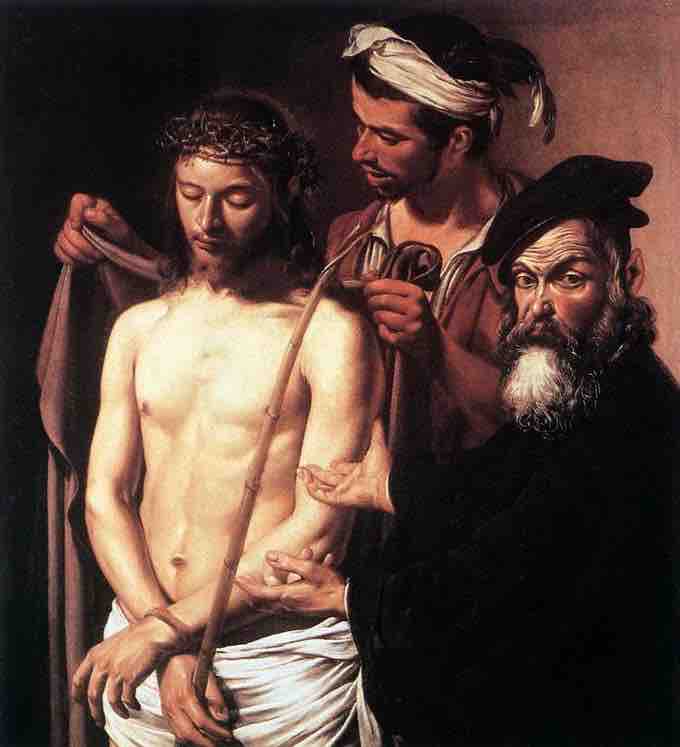Overview: Baroque Painting
Baroque painting is associated with the Baroque cultural movement, which began in Italy in the 17th century. It encompasses a great range of styles, as most important and major painting during the period beginning around 1600 and continuing into the early 18th century is identified today as Baroque painting. In its most typical manifestations, Baroque art is characterized by great drama, rich, deep color, and intense light and dark shadows.
Relevant Italian Painters of the Time
Caravaggio
Caravaggio (1571–1610), born and trained in Milan, stands as one of the most original and influential contributors to late 16th century and early 17th century European painting. He was known for painting figures, even those of classical or religious themes, in contemporary clothing, or as ordinary men and women. His inclusion of the seedier side of life was in marked contrast to the trends of the time. He used tenebrism and stark contrasts between partially lit figures and dark backgrounds to dramatize the effect.
Some of Caravaggio's most famous paintings include The Calling of St. Mathew, St. Thomas, The Conversion of St. Paul, The Entombment, and The Crowning of the Christ. His use of light and shadow was emulated by the Caravaggisti, the followers of Caravaggio, such as Orazio Gentileschi (1563–1639), Artemisia Gentileschi (1592–1652/3), Mattia Preti, Carlo Saraceni, and Bartolomeo Manfredi.
The Calling of Saint Matthew by Caravaggio
The Calling of Saint Matthew shows Caravaggio's use of tenebrism and stark contrasts between partially lit figures and dark backgrounds to dramatize the effect.

Ecce Homoc by Caravaggio, 1605
Example of a Baroque painting by Caravaggio
Other Artists
Other influential Italian painters during this early period who influenced the development of Baroque painting include Peter Paul Rubens, Giovanni Lanfranco, and Guercino. Other artists, such as Guido Reni and Domenico Zampieri, pursued a more classical approach. Baroque painters such as Cortona, Giovan Battista Gaulli, and Ciro Ferri continued to flourish alongside the classical trend represented by painters such as Sacchi and Nicholas Poussin. Even a classicist painter like Sacchi's pupil Carlo Maratta was influenced in his use of color by the Baroque.
The principal painter of the Roman High Baroque, a period that spanned several papal reigns from 1623 to 1667, was Pietro da Cortona. His baroque manner is clearly evident in paintings that he executed for the Sacchetti family in the 1620s and the vault fresco in the Palazzo Barberini (finished in 1639) in Rome.
Monumental ceiling frescoes mainly date to the latter part of the 17th century. Some were dramatically illusionistic, such as Gaulli's nave fresco (1674–9) in the church of the Gesu and Andrea Pozzo's nave vault (1691–4) in Sant'Ignazio, both in Rome. Luca Giordano (1634–1705) was born in Naples and was so prodigious in his output of paintings that he was known as ‘Luca fa presto' ("Luke fast work").

The Creation of Man, fresco by Giordano in the Palazzo Medici-Riccardi in Florence, 1684–1686.
Giordano was an extremely prolific Italian Baroque painter.